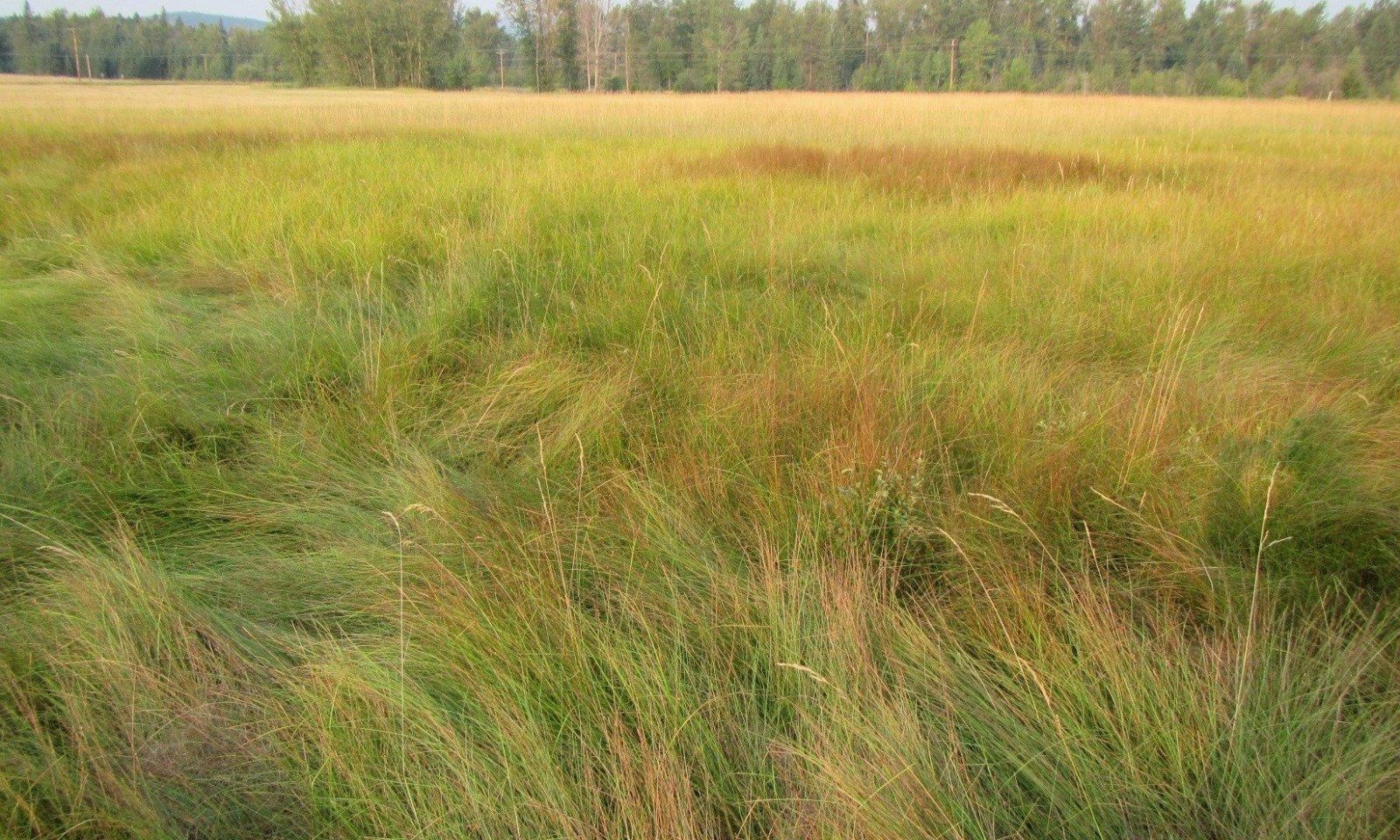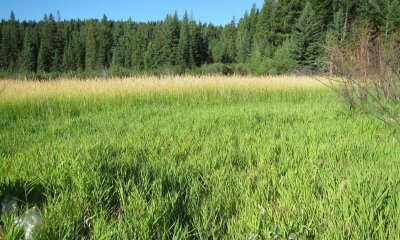
Montane Intermediate Flow Through Type Fen Seeley, Swan, Flathead and Tobacco Valleys
Scenario model
Current ecosystem state
Select a state
Management practices/drivers
Select a transition or restoration pathway
-
Transition T1A
Hydrology of ecological site severely altered via extended drought, ditching/draining, improper grazing management.
More details -
Transition T1B
Reed Canary Grass propagules introduced and dominates any community within State 1.
More details -
Transition T1C
Fens dewatered, plowed and planted with pasture or cropland grass species.
More details -
Restoration pathway R2A
Hydrological function restored to reference conditions; weed management practices.
More details -
Restoration pathway R3A
Extreme weed management practices.
More details -
Restoration pathway R4A
Hydrologic function restored to reference conditions; seeding with native obligate wetland sedges
More details -
No transition or restoration pathway between the selected states has been described
Target ecosystem state
Select a state
Description
This is the historic reference state with normal functioning hydrology and wetland obligate sedge species dominating the vegetation community.
Submodel
Description
This state has severely altered hydrologic function from the reference state and native upland vegetation has significantly encroached into the native wetland obligate sedge vegetation community.
Submodel
Description
This is species composition change from State 1.0 into one dominated by the escaped cultivar of reed canary grass with a concomitant decrease in the native perennial obligate wetland sedges of the reference community.
Submodel
Mechanism
T1A Hydrology of ecological site severely altered via extended drought, ditching/draining, improper grazing management.
TRANSITION 1A: Abrupt, large scale, extensive or intensive disturbances to the hydrology of groundwater, surface water flow or precipitation including large scale harvesting or clearcutting, road building, water wells, concentrated ungulate use, ditching, draining, peat mining or severe stand replacing fire upslope from site or severe fire within site. These disturbances could cause a threshold to be crossed in which wetland obligate species no longer dominate the vegetation community. Rather, the community is comprised of upland plant species.
Transition T1B


Mechanism
T1B Reed Canary Grass propagules introduced and dominates any community within State 1.
TRANSITION 1B: Invasion by reed canary grass into any of the communities of State 1. Reed canary grass establishes via propagules of the cultivar and dominates the site by outcompeting native perennial obligate wetland sedges through various means including efficient use of additional nutrients supplied by agricultural run-off.
Mechanism
T1C Fens dewatered, plowed and planted with pasture or cropland grass species.
TRANSITION 1C: Abrupt, large scale, extensive or intensive disturbances to the hydrology of groundwater, surface water flow or precipitation from ditching and/or draining to create conditions for pasture and/or croplands. These disturbances could cause a threshold to be crossed in which wetland obligate species no longer dominate the vegetation community. Rather, the community is comprised of tame pasture and/or cropland grass species.
Mechanism
R2A Hydrological function restored to reference conditions; weed management practices.
RESTORATION 2A: Hydrologic function restored to reference conditions; weed management practices to reduce upland weed species below the 10 percent canopy cover proportion.
Restoration pathway R3A


Mechanism
R3A Extreme weed management practices.
RESTORATION 3A: Extreme weed management practices that reduce the canopy cover of reed canary grass to less than 10 percent canopy cover; hydrologic function restored to State 1 if any changes due to reed canary grass have occurred.
Model keys
Briefcase
Add ecological sites and Major Land Resource Areas to your briefcase by clicking on the briefcase (![]() ) icon wherever it occurs. Drag and drop items to reorder. Cookies are used to store briefcase items between browsing sessions. Because of this, the number of items that can be added to your briefcase is limited, and briefcase items added on one device and browser cannot be accessed from another device or browser. Users who do not wish to place cookies on their devices should not use the briefcase tool. Briefcase cookies serve no other purpose than described here and are deleted whenever browsing history is cleared.
) icon wherever it occurs. Drag and drop items to reorder. Cookies are used to store briefcase items between browsing sessions. Because of this, the number of items that can be added to your briefcase is limited, and briefcase items added on one device and browser cannot be accessed from another device or browser. Users who do not wish to place cookies on their devices should not use the briefcase tool. Briefcase cookies serve no other purpose than described here and are deleted whenever browsing history is cleared.
Ecological sites
Major Land Resource Areas
The Ecosystem Dynamics Interpretive Tool is an information system framework developed by the USDA-ARS Jornada Experimental Range, USDA Natural Resources Conservation Service, and New Mexico State University.
